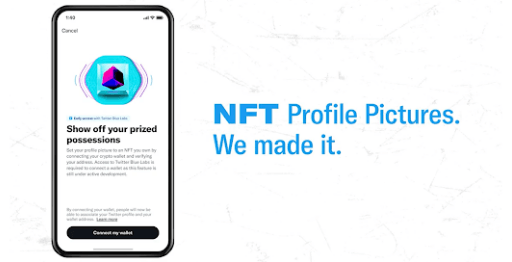Early avatars were small, square images (80×80 to 100×100 pixels) used to see who was saying what in chat rooms and large forums in the early days of the internet. Now, our display photos are an integral part of internet culture, making NFT avatars a perfect fit. Here’s how they work, where to find them and how to make one for yourself.
How do NFT Avatars work?
Traditionally, an avatar is a cartoon or anime image of a character from the shoulders up. They help create anonymity for people who want customization without displaying their own face on their profile.
What makes NFT avatars different from traditional avatars comes down to value and scarcity. Similar to physical trading cards or famous works of art, the value of an NFT avatar depends on its rarity and consumer desirability.
NFTs are “nonfungible tokens,” meaning they’re unique digital files that are tokenized and tracked on a public ledger — the blockchain. There’s scarcity in NFT collections, giving the NFTs real-world value that’s tied to consumer interest and cryptocurrency value. And thanks to blockchain tech, all transactions are recorded so it’s easy to prove ownership and for the original creator to earn royalties with smart contracts.
Large NFT avatar collections generally feature one character with different variations, such as different hair, accessories, clothing, etc. It’s common to see an NFT avatar project with five to seven unique attributes that sort them into different categories with varying value.
![]()
Image source: OpenSea.io
NFT avatar marketplaces
You’re likely to find NFT avatars on most mixed NFT marketplaces like OpenSea, Gate.io’s NFT Magic Box and Nifty Gateway. Unlike game NFTs where you may need to visit a proprietary marketplace to purchase them, avatar NFTs are widely available.
NFT avatars are a popular genre with thousands of collections and one-off avatars. NFT creators have personified objects, robots, animals and more, expanding the avatar genre into other niches such as memes, collectibles, GIFs, music, celebrities and so on.
Why buy an NFT Avatar?
Many users buy NFT avatars for bragging rights, potential profit or simply to collect them.
As an artist, NFT avatars can create a source of income. Plus, creators can have smart contracts attached to their NFTs, which allow them to earn royalties on subsequent sales.
In role-playing games, an NFT avatar can be used as your playable character, like DeFi Kingdoms, Thetan Arena or CryptoBlades.
Use your NFT as an actual avatar on Twitter
Some social media platforms, such as Twitter, allow users to use an NFT as a profile picture by connecting a digital wallet to the app.

Image source: Twitter
Users with NFT profile pictures on the site are differentiated by a hexagon, instead of the original circle.
When the news of this new feature, there was some backlash. People had even started creating block bots that automatically block users with an NFT profile picture, as reported by The Next Web.
There’s also limitations to this feature. You must be using an iOS device on the Twitter app, and it’s only available in the US, Canada, Australia and New Zealand. There are also only six wallets accepted to use this feature: Argent, Coinbase Wallet, Ledger Live, MetaMask, Rainbow and Trust Wallet. And you can only connect one wallet at a time.
How to buy and sell NFT avatars
To buy an NFT avatar, there are three basic steps:
- Find a marketplace and create an account.
- Get a digital wallet to deposit funds and store your NFTs.
- Have cryptocurrency and make your purchase.
Nearly all NFTs are purchased with cryptocurrency, but some marketplaces allow for credit or debit card transactions with fiat. However, Etheruem (ETH) is typically required to make a purchase. Plus, gas fees are required for most purchases and transactions on the blockchain.
Software digital wallets — such as ZenGo or MetaMask — are typically free to use and require downloading a browser extension. Hardware digital wallets are plugged into your computer and store your NFTs offline when not in use.
To sell an NFT avatar, follow these general steps:
- Create or commission a digital file.
- Make an account with a marketplace where you want to mint the file.
- Upload the file and pay a gas fee to tokenize on the blockchain.
- Fill out the details of your NFT and list it for sale
An NFT can be most digital files — GIF, MP3, MP4, JPG and WAV are all widely accepted formats, as long as it’s smaller than 100MB.
Once you’ve minted your file and made a successful sale, you can earn royalties each time the NFT is sold, generally around 5% to 10%, depending on the marketplace. Marketplaces typically have auctions and fixed-price sales.
To mint a new NFT on a marketplace, you’ll pay a gas fee, like a processing fee with a credit card. And, as a seller, expect the marketplace to take a percentage of the final sale price — typically around 5% to 15%.
Compare NFT marketplaces
How to make money with NFT Avatars
There are two main ways to earn with NFT avatars:
Create your own project and sell
If you have an internet connection, digital wallet and some crypto, you can design and sell your own NFT avatars on various platforms. An NFT needs to be a digital file tokenized on a blockchain, which you can do on an NFT marketplace after creating an account.
You may also have the ability to design and sell NFT designs to investors and make money that way, using freelancer platforms like Fiverr, PeoplePerHour or Upwork. If you’re not an artist, you can commission a designer to create your NFTs using these platforms as well.
Flipping NFTs
Buying and selling NFTs for a profit is another way you could try to earn. There are 2 common strategies for flipping NFTs:
- Buy and hold. Buy an NFT and hope it ages like a fine wine. Once the value and price of the cryptocurrency increase, you can sell for a profit. This tactic requires patience and a close eye on the market, and may require a lot of cash up front to obtain highly-desirable NFTs that are slated to appreciate.
- Ride the hype. An NFT collection may peak in value soon after it’s dropped. If you have access to exclusive drops of NFT avatar collections, you could swoop in, buy them at a low price and sell once the market starts to peak. Again, this requires some industry knowledge, a close eye on the market, and could involve a large investment without the promise of a profit.
What makes NFT avatars valuable
An NFT’s avatars value is primarily driven by consumer interest, history and reputation.
For example, Crypto Punks is one of the most famous and recognizable NFT avatar collections with the cheapest one around $200,000 —or about 66 ETH — as of February 2022, according to Larva Labs. Crypto Punks are some of the first NFTs to ever be minted on the Ethereum blockchain, giving them historical value.
![]()
Image source: Larva Labs
Often, a driving force in NFT value is celebrity engagement or endorsement. The World of Women collection gained popularity almost overnight thanks to celebrities like Gary Vaynerchuk and Logan Paul, as reported by Coindesk.
![]()
Image source: WorldofWomen.art
What to watch out for
If you’re looking to invest in NFTs in the long-term, you’ll have to keep your eye out for scams and hacks. This means protecting your assets and watching out for red flags.
- No guaranteed earnings. Values of NFTs and cryptocurrency fluctuate by the second. And since cryptocurrency is decentralized, there’s no government entity watching over and ensuring you’ll earn from your investments.
- Rug pulling scams: A common investment strategy in NFTs is riding the hype of a new collection or project. Investors may jump on a new collection and buy the NFTs in hopes that buying everything out will inflate the price, or crypto games drop and sell exclusive NFTs and users buy them to use for an upcoming, promised game. However, some creators will sell NFTs, then take the money and run. Unfortunately, for circumstances like this, there really isn’t any recourse.
- Phishing scams: Phishing scams have been around for a while, but they can represent a huge risk for NFT investors. If someone were to get access to your digital wallet’s private keys, they could steal your digital assets and run — and you have little hope of getting them back.
- Marketplace fraud: Fake NFTs exist, too. It can be difficult to validate the authenticity of an NFT, but looking through ownership history is a good place to start. If you purchase a fake NFT, a third-party marketplace generally isn’t liable for losses.
Consider the reputation of creators you’re looking to invest in, the validity of the NFTs and whether or not the collection is verified on marketplaces and social media. Cryptocurrency is decentralized finance, meaning that no entity or government agency is watching your back, so you gotta watch your own.
Want to learn more about the world of NFTs? Check out our NFT hub here.
More guides on Finder
-
Best private business loans in Canada
Check out some of the best private business loans in Canada to help you through seasonal shifts.
-
Apps like Wagepay for quick funding
Compare payday lenders and cash advance providers that offer loans like Wagepay.
-
Loans Like CreditNinja
Check out fees and features of these personal loan alternatives to CreditNinja in Canada.
-
Finder’s Editorial Review Board and expert contributors
Our expert contributors are a key part of Finder’s content. Learn more about the opportunities for experts who work with us.
-
Loans like Eastern Loans
Compare nine Eastern Loans alternatives to find funding that suits your needs.
-
Compare short-term loans in BC
Find out where to get a short-term loan in BC and how to get funded fast.
-
Same-day loans in Canada to help pay for emergencies
In a tight spot? These same-day loans can help, but they’re not all the same.
-
Best loan apps in Canada
Use our list to compare the best loan apps in Canada.
-
RBC Flex Choice Business Account Package review
Learn about the supported transactions, features and fees of the RBC Flex Choice Business Account Package.
-
How to Open a Chequing Account Online
With most banks, opening a chequing account online is a straightforward process
